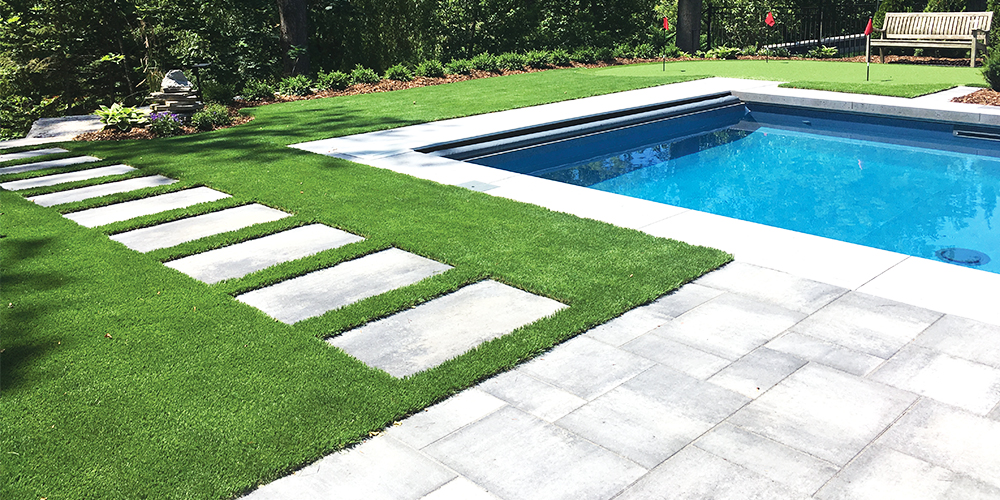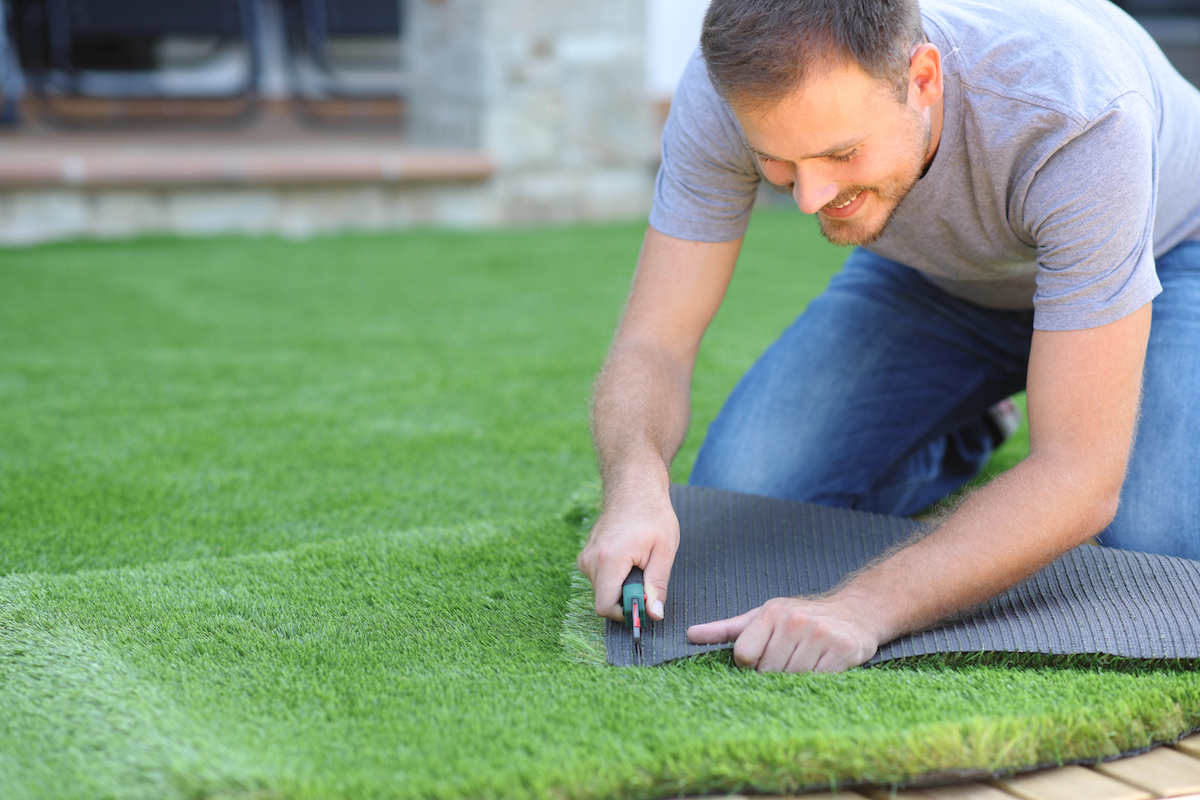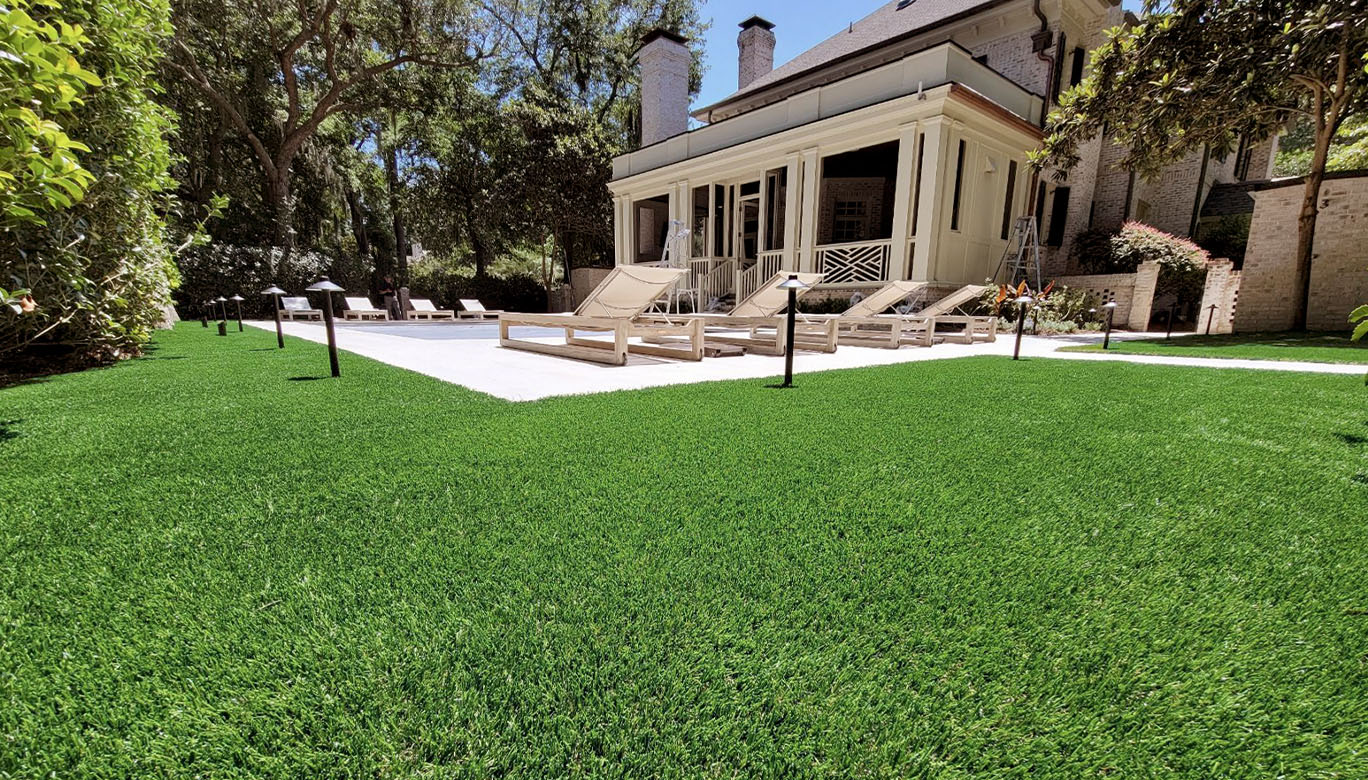See Why Homeowners Prefer Artificial Lawn for Lasting Landscaping Practices
As property owners increasingly focus on sustainability in landscaping, man-made turf has actually arised as a compelling choice to typical lawn. What stays to be explored is the complete scope of advantages that artificial lawn can use to homeowners and the environment alike.
Water Preservation Advantages
Among one of the most substantial advantages of fabricated turf is its function in water preservation. Standard turf lawns require considerable amounts of water to preserve their lavish look, commonly bring about overuse of neighborhood water sources, particularly in arid areas. In contrast, synthetic grass removes this demand entirely, as it does not need irrigation. This not only saves water yet additionally decreases the stress on local water supply, particularly throughout dry spell conditions.
In addition, the installation of synthetic grass can contribute to a much more sustainable landscape. Homeowners can significantly decrease their water costs, enabling reallocation of sources to other environmental campaigns or house usages. Furthermore, synthetic turf is designed to withstand numerous climatic conditions without the demand for extra watering, making it an excellent selection for regions facing water scarcity.
The ecological advantages prolong beyond prompt water cost savings. By minimizing water usage, synthetic turf aids to minimize the effects of climate change, preserving important communities that are threatened by too much water extraction. As sustainable landscaping techniques get grip, synthetic turf arises as an accountable choice for home owners seeking to develop eco-friendly exterior areas.
Decreased Upkeep Initiatives
Artificial turf considerably reduces maintenance initiatives contrasted to traditional yard yards. With artificial yard, homeowners can get rid of the lengthy jobs associated with natural landscape design, such as mowing, fertilizing, and weeding. This not only conserves beneficial time but likewise minimizes physical labor, making grass treatment available for individuals of any ages.
Among one of the most significant benefits is the lack of normal mowing. Typical grass require frequent trimming to maintain a visually pleasing elevation, whereas synthetic grass continues to be consistently lush without the need for cutting. Additionally, property owners no more require to use plant foods or chemicals, which are usually called for to maintain natural turf healthy. This shift not just lightens the work yet additionally advertises a neater, extra consistent appearance year-round.
Furthermore, artificial lawn is resilient and sturdy, requiring marginal upkeep beyond periodic brushing and rinsing to get rid of particles. This ease of upkeep enables property owners to enjoy their outdoor rooms without the consistent concern of maintenance, providing even more time for leisure and family members activities. Inevitably, the decreased upkeep efforts related to synthetic grass make it an attractive option for those seeking a low-maintenance, aesthetically appealing landscape.

Ecological Effect Reduction
There is an expanding recognition of the ecological benefits connected with synthetic lawn, particularly in regards to water conservation and minimized chemical usage. Standard lawns call for significant amounts of water, specifically in drought-prone regions, causing increased stress on regional water sources. On the other hand, man-made lawn eliminates the requirement for irrigation, substantially decreasing water usage and advertising sustainability.
Additionally, conventional yard upkeep often includes the application of herbicides, fertilizers, and chemicals, which can add to dirt and water air pollution. Synthetic grass alleviates this ecological threat by calling for minimal upkeep and virtually eliminating the requirement for dangerous chemicals. This not just boosts dirt wellness yet also safeguards local environments from hazardous overflow.
Additionally, the manufacturing of all-natural lawn yards normally entails using nonrenewable fuel sources for mowing and landscaping equipment, further adding to greenhouse gas emissions. By choosing synthetic grass, homeowners can dramatically decrease their carbon impact connected with yard care activities.
Aesthetic Charm and Adaptability
Along with its environmental advantages, fabricated turf uses significant aesthetic charm and versatility for landscaping. House owners can achieve a lush, eco-friendly look year-round, eliminating the seasonal changes frequently related to natural lawn. This regular visual not only enhances the visual charm of a residential or commercial property however additionally adds to a well-kept and refined look.
Additionally, fabricated lawn is available in a variety of appearances, designs, and shades, permitting for customization to suit specific choices and layout motifs - Phoenix turf companies. Whether utilized in domestic gardens, commercial rooms, or entertainment locations, it can flawlessly incorporate into diverse landscaping layouts, from modern-day minimalist to lush exotic setups
The convenience of synthetic grass extends past plain see it here appearance; it can be installed in numerous places, including roofs, patio areas, and even interior areas, creating possibilities for one-of-a-kind landscaping solutions. In addition, it appropriates for a range of tasks, from children's backyard to pet-friendly atmospheres, offering capability without jeopardizing style.
Inevitably, the visual appeal and convenience of synthetic grass make it an eye-catching choice for homeowners looking for sustainable landscape design options that do not sacrifice elegance for ecological responsibility.

Long-Term Price Financial Savings
One of the most engaging advantages of artificial lawn is its capacity for long-term price savings. Unlike all-natural lawn, which requires normal upkeep-- including mowing, watering, feeding, and bug control-- synthetic grass considerably minimizes these continuous expenses. Home owners can conserve a considerable quantity on water expenses, especially in regions where water deficiency is a pressing concern. The elimination of grass care solutions even more adds to monetary savings, as there is no requirement for customized equipment or labor.
Additionally, fabricated grass has a lifespan of 15 to 25 years, relying on its high quality and usage. This durability lessens substitute prices, making it an extra economical selection over time. Additionally, the preliminary investment in synthetic grass can often be recouped via the financial Read Full Article savings built up with time.
While the in advance expense may appear greater compared to turf installment, the advancing cost savings from decreased maintenance and water use commonly exceed these preliminary expenditures. Inevitably, the fostering of synthetic grass not only advertises a sustainable landscaping solution yet likewise offers homeowners a monetarily smart option that aligns with lasting budgeting objectives.
Final Thought
Synthetic grass becomes a compelling option for lasting landscape design, using considerable advantages in water conservation, reduced upkeep efforts, and reduced environmental effect. Its aesthetic allure and versatility boost the aesthetic landscape while straightening with contemporary sustainability goals. Additionally, lasting expense savings add to its appearance for property owners. As areas progressively focus on environmentally pleasant practices, the fostering of fabricated turf represents a dynamic step toward accomplishing lasting and resistant landscapes.
Additionally, fabricated grass is designed to withstand different climatic problems without the requirement for additional watering, making it an optimal choice for areas encountering water scarcity. (Phoenix turf companies)

Synthetic turf arises as a compelling alternative for sustainable landscaping, supplying substantial advantages in click for source water preservation, minimized maintenance initiatives, and decreased ecological effect.